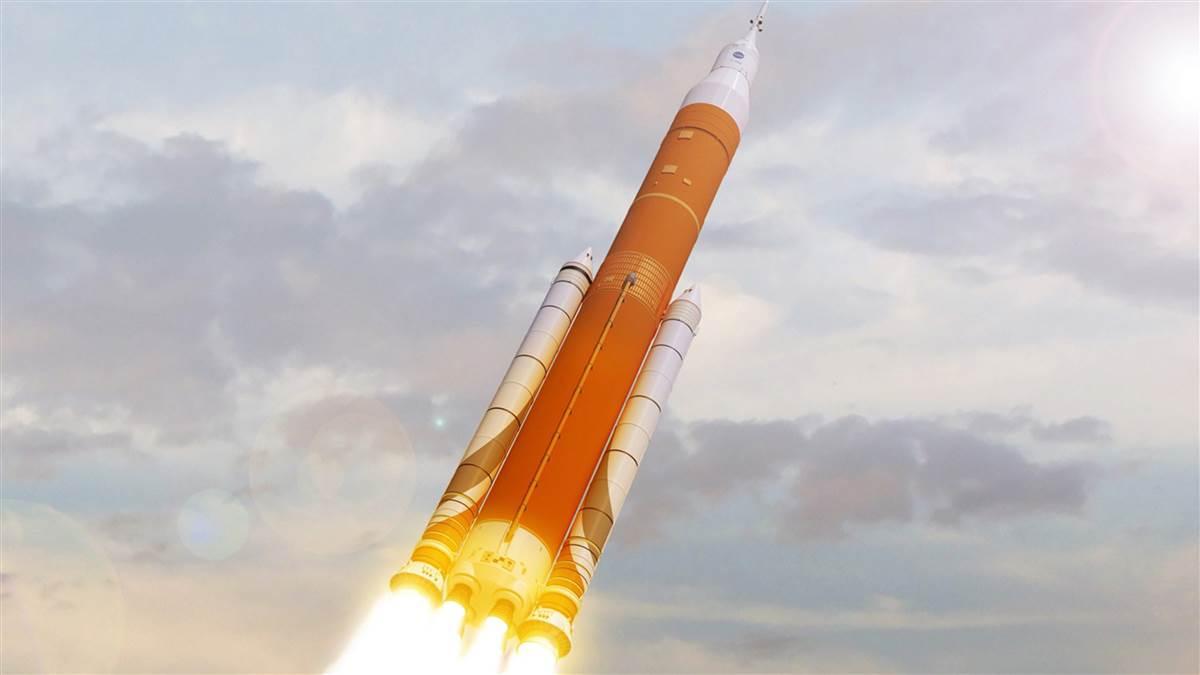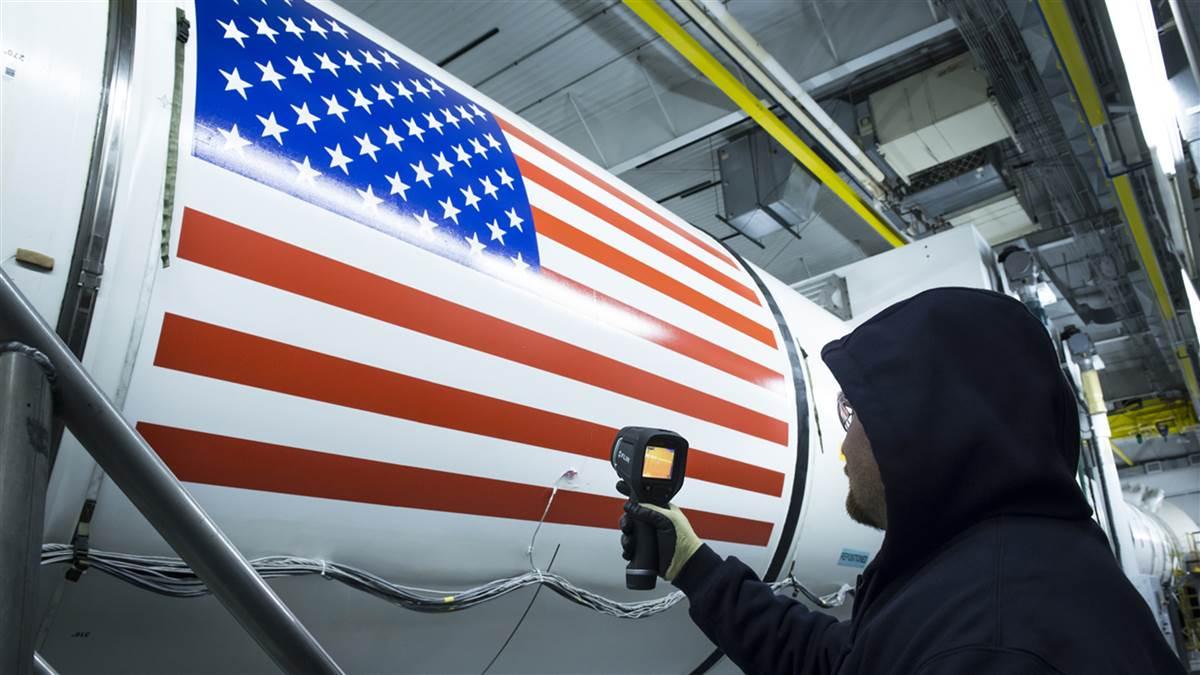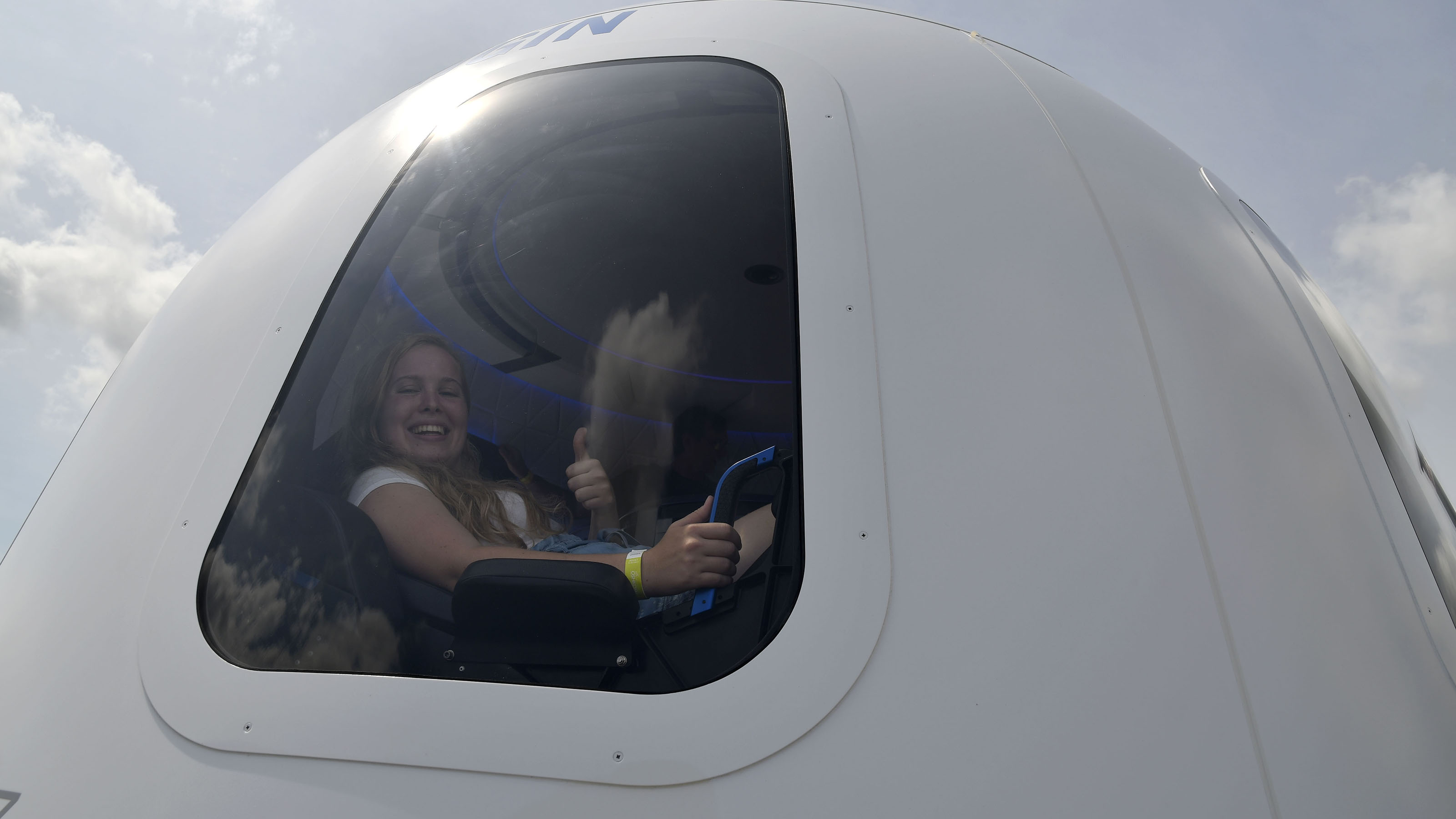Refocused space council targets moon, Mars
National Space Council meeting highlights innovation, STEM
The refocused National Space Council, dormant since the 1990s, embraced public-private partnerships; science, technology, engineering, and math curriculum; and aspirations for Americans to reconquer the moon “within five years” as a stepping stone to Mars exploration.
The council, chaired by Vice President Mike Pence, met in front of the space shuttle Discovery at the Smithsonian National Air and Space Museum’s Steven F. Udvar-Hazy Center in Chantilly, Virginia, a reminder of the space program’s successes—and its tragedies. The shuttle Challenger exploded shortly after liftoff Jan. 28, 1986, and its sister ship Columbia disintegrated upon reentering Earth’s atmosphere Feb. 1, 2003, signaling the beginning of the end of the reusable spacecraft fleet.
Pence pledged to use space technology to help “protect American security,” which he deemed “vital.” The work will be “difficult, but difficulty always brings out our best,” he added, and will “usher in a new era that will inspire our children to seek education in science, technology, engineering, and math,” also known as STEM concepts.

Leaders from Lockheed Martin, Boeing, Orbital ATK, Space X, Blue Origin, the Sierra Nevada Corp., and other officials discussed strategies for lunar exploration, “deep space” probes, and strategies to develop interest in aerospace through high school STEM curriculum.
“Nothing is more inspiring to the next generation of STEM students than America resolved to unlock” the mysteries of space, explained Lockheed Martin Chairman and CEO Marillyn Hewson. She said it was an “exciting time for our nation” as a new generation of Americans looked to space and beyond to drive new industry and cooperation.
She also noted that investments in space satellites helped government leaders “prepare for the worst” during a spate of recent hurricanes. Data collected by weather satellites saved “countless” lives during Hurricane Harvey, Hurricane Irma, and Hurricane Maria, added Hewson. The space council meeting took place Oct. 5, several days before Hurricane Nate made landfall in Mississippi.

David Thompson, President and CEO of Orbital ATK Inc., said America was on the verge of launching the first deep-space vehicle since the 1960s. He said that NASA, with a renewed sense of purpose, should be able to “fully exploit” the Orion SLS rocket launch system “within the next five years.”
“Now is the time for swift and bold action,” said Gwynne Shotwell, president of Space X, the California company making swift strides in private space exploration and reusable rocketry. She said the United States was outpacing the world in commercial space exploration “along with the thousands of jobs that follow it.” Shotwell envisioned a day with “an American presence on the moon and boots on the surface of Mars.”
Boeing President and CEO Dennis Muilenburg said the aerospace giant was “focused on the future” with the company’s seven-passenger CST-100 Starliner spacecraft, which is in development. “Our CST Starliner launched on the Atlas V rocket will return Americans to space on American-built” technology that he promised would “revolutionize space launch.” Muilenburg noted that Boeing supports 1.3 million U.S. jobs and is committed to investing in the future. He assured the council that “Boeing will be there leading every step of the way."
Sierra Nevada Corp. Owner and CEO Fatih Ozmen, a Turkish immigrant who, along with his wife Eren, built the Nevada-based aerospace company into a space exploration powerhouse, also lauded the idea of conquering outer space via public-private partnerships. He said the company’s track record includes “25 years of experience in space and 450 successful missions.” Ozmen added that private sector aerospace firms working alongside NASA's Dream Chaser Space System would “light a fire and inspire our children.”
Blue Origin CEO Bob Smith said the company anticipated its New Glenn space rocket would “take people and payloads into low-Earth orbit and beyond” and drive economic opportunities that would lead to “millions of people living in space.” The company’s New Shepard rocket and a mockup of its space capsule captured the imaginations of thousands of aviators when the spacecraft were displayed in July at EAA AirVenture in Oshkosh, Wisconsin. He echoed the desire for the commercial space industry to partner with government efforts, adding that “the moon is a key step” to further space exploration.
AOPA recognizes the importance of growing the pilot population, and the association put several programs in place to ensure a robust future for aviators. The goal of AOPA’s You Can Fly High School Initiative is to help build and sustain aviation-based STEM programs and to provide a quality workforce to the aviation industry. More than 200 educators plan to attend the Nov. 6 and 7 AOPA High School Aviation STEM Symposium in Fort Worth, Texas, to share best practices, resources, and strategies that help inspire high school students.





